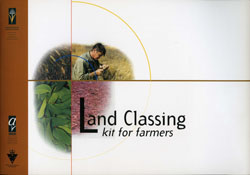Land Classing kit for Farmers
This booklet was prepared by Nathalie Baxter of the former Department of Natural Resources and Environment, Agriculture Victoria in January 2000. The booklet aims to help farmers identify the limitations of the land and soil in a systematic and rational way. Land classing is a fundamental step in developing a Whole Farm Plan. By identifying areas with similar land and soil types, landholders are better able to make informed decisions on what land use is suited to a certain area. Land classing determines land and soil with similar agricultural potential and similar management requirements.
Page top
To view the information PDF requires the use of a PDF reader. This can be installed for free from the Adobe website (external link).



